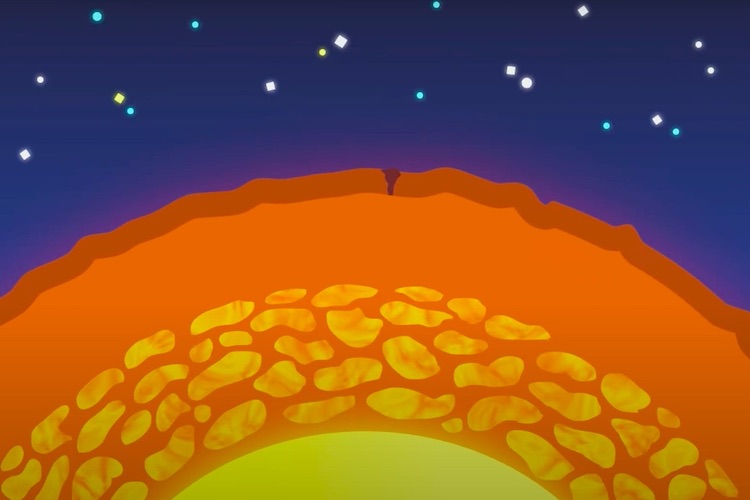Black Holes
Theoretical physicist Mahdi Godazgar on Einstein's equations, the event horizon, and spaghettification

On January 14, 2015 Nature published a paper, “Impact jetting as the origin of chondrules” about grains of solidified melted rock called “chondrules” found in meteorites. We have asked one of the authors of this research, Dr. Brandon Johnson from MIT, to say more about this work.
Chondrules are roughly millimeter scaled previously molten spheroidal particles found in most meteorites. Chondrules are some of the oldest known solids in the solar system and clearly contain important information about the condition of the nascent solar system, but their origin is mysterious.
First, we modeled protoplanetry impacts at velocities ranging from 1-6 km/s. We found that impacts do not eject melt above escape velocity until the impact velocity exceeded 2.5 km/s.
We then used a Monte Carlo accretion code estimate of where collisions were taking place, the size of the bodies that were hitting each other, and the impact velocities. Because nebular gas tends to decrease the relative velocity of bodies, we found that roughly Moon sized target bodies and impactors roughly the size of Vesta up to the size of the Moon (about 500 km – 3500 km diameter) were required to achieve impact velocities exceeding 2.5 km/s.
Finally, we used a radiative transfer model to determine the cooling rate of these plumes of molten droplets. We found that plumes of molten droplets produced by Vesta to Moon sized impactors (those predicted by the accretion code) would cool at 10-1000 K/hr. This cooling rate is consistent with those based on laboratory studies, which reproduce the igneous textures observed in chondrules.
Recent work suggests that chondrules formed in an environment where the number of chondrules in a given volume or “dust enrichment” was very high, many times higher than can be achieved in the solar nebula. This finding comes from an observations of the volatile (meaning easily vaporized) content of chondrule olivine coupled with detailed chemical modeling. This work calls into question the widely accepted hypothesis that chondrules formed in nebular shocks. However, impact produced plumes were suggested as a way to achieve these high dust enrichments.
I had previously worked extensively on the formation of terrestrial impact ejecta deposits; the most famous example is the K-Pg boundary layer, which marks the end of the reign of the dinosaurs. In this work, I had modeled the formation of impact spherules, which are mm scale previously molten droplets created by impact. It was clear to my collaborators and I that if chondrules had an impact origin, they were related to impact spherules. Thus, we set out to test the idea that impacts could produce chondrules.
Once the proper context for chondrule formation is established, we can really start to look back in time to the earliest stages of planet formation. Continued detailed observations of chondrules and more sophisticated modeling of chondrule formation and the following aftermath, will help us understand when protoplanets formed, what their compositions were like, and what the solar nebula was like dynamically. One aspect I am particularly excited about is testing the Grand Tack hypothesis, in which both Saturn and Jupiter make an initial foray into the inner solar system before migrating back out to their current positions.

Theoretical physicist Mahdi Godazgar on Einstein's equations, the event horizon, and spaghettification

Staff Member at Max Planck Institute for Solar System Research, Paul Hartogh, on the use of the deuterium/hydr...

Matematician Hadi Godazgar on the Big Bang, black holes, and the Information Paradox